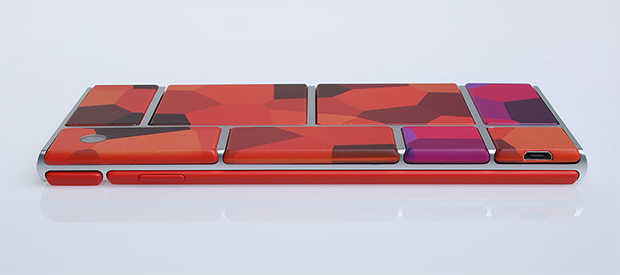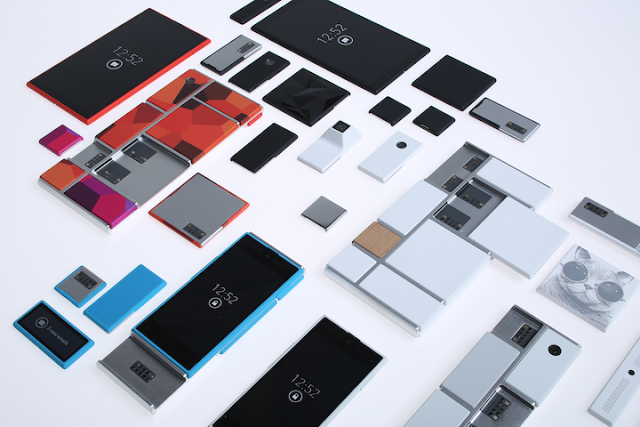
Project Ara is quickly shedding its skin of a very cool but impractical for years-yet type of project. Following its decision to keep the Advanced Technology and Projects group led by Regina Dugan which hosts Project Ara, Google yesterday announced that the first developer conference focused on the modular smartphone would take place in April. In a detailed Time article comes the revelation that the first Ara smartphone could hit the street as early as Q1 2015 and that it could sell for as low as US$50.
The heart of the Project Ara smartphone will be an endoskeleton (called an endo) on which modules will be attached. Google-branded, they will come in three sizes, mini, medium (with room for 10 modules) and the phablet-sized jumbo. The endo will essentially be an aluminium frame with the necessary circuitry for the modules to work together and a backup battery – nothing else. Everything else, including the display, will be a module about 4 millimeters thick that attaches to the endo either with latches on the front and electropermanent magnets on the back.
For the US$50 price that Google is aiming for, you should not expect much. Calling it a smartphone might even be too much. For example, it might only come with Wi-Fi connectivity. But that’s the promise of Project Ara: With base in hand, customers would immediately pick up the modules they want and can afford. It would be very easy to start with a basic device and upgrade it later on, one module at a time.

Google has also begun to think about how to get its modular phones into the hands of customers. Its US$50 basic model would be sold at convenience stores. A preloaded app would help customers help choose their first modules and aesthetic modifications. The app would also let you order your own Ara smartphone using a friend’s device. A more tailored shopping experience would await those visiting Project Ara kiosks. Imagine custom tablets that can read various body responses such as pupil dilation and heart rate to help customers find the configuration that makes them happiest.
Project Ara still faces a lot of obstacles. ATAP projects have a two-year window to prove their feasability. At that point, it will be turned into a business and presumably have to be profitable to live on further. There are also technological hurdles to be overcome as well as more mundane challenge such as regulatory approvals.
If you’re interested in Project Ara, do yourself a favour and read this Time article. It’s well worth it!
Source : Time
